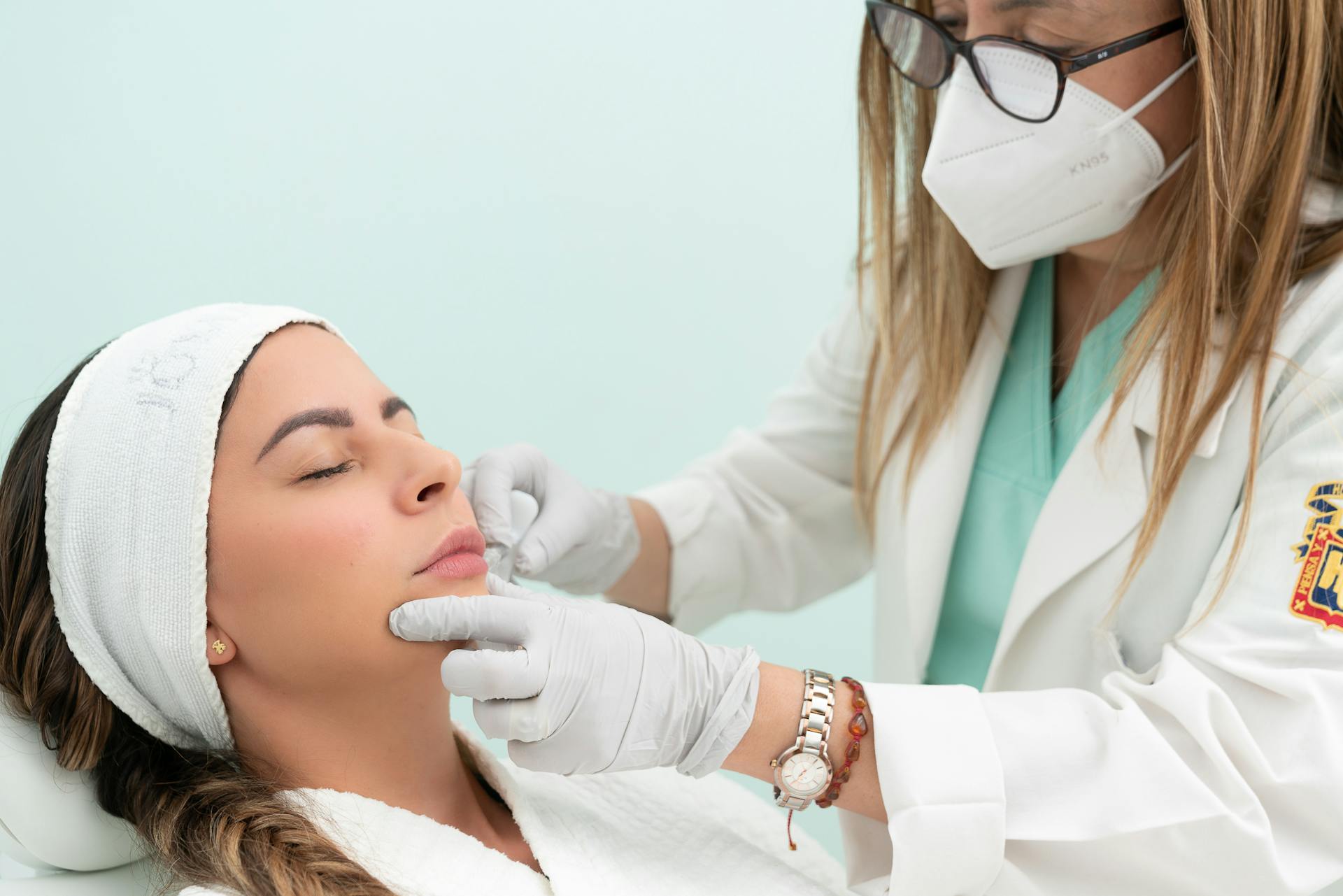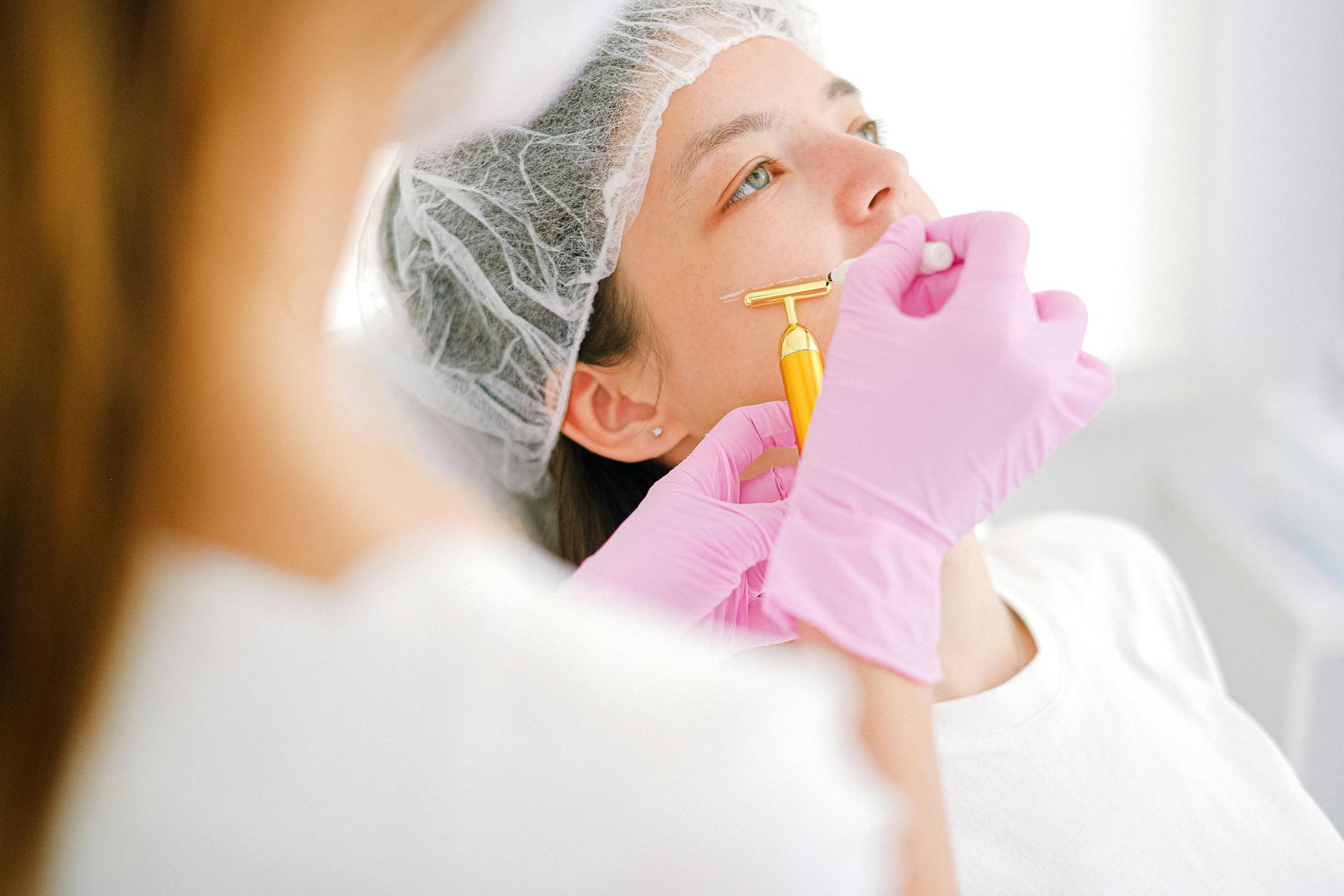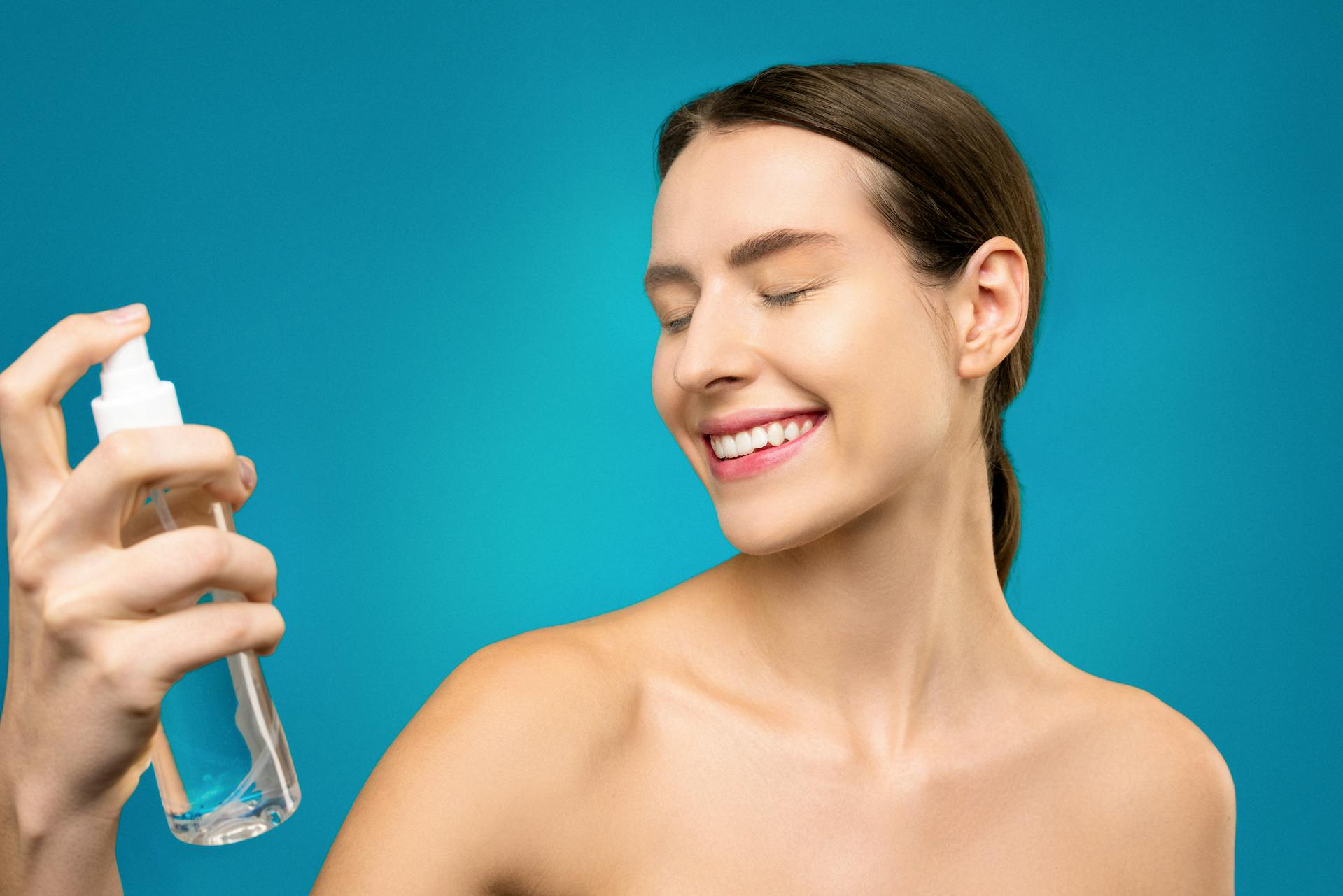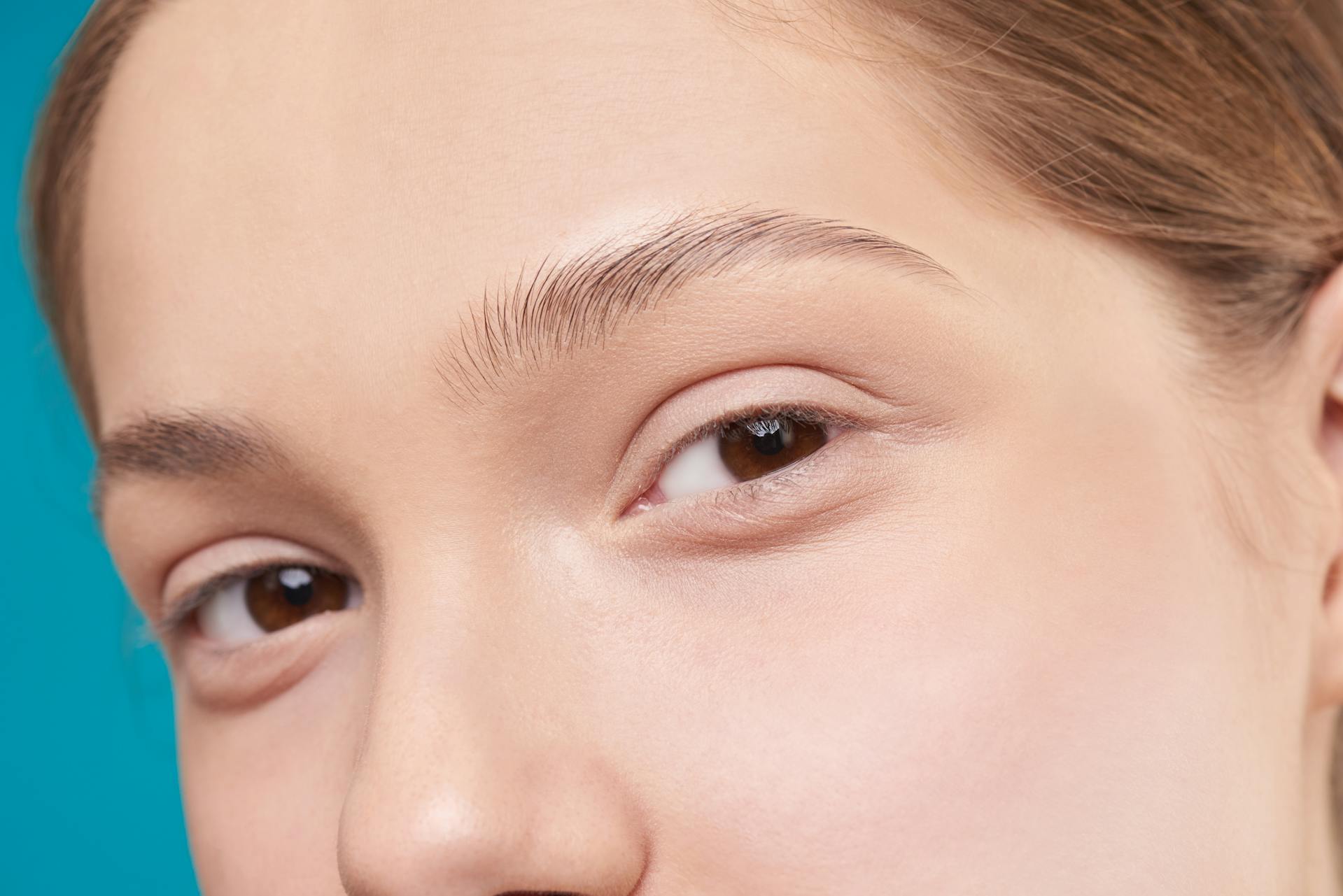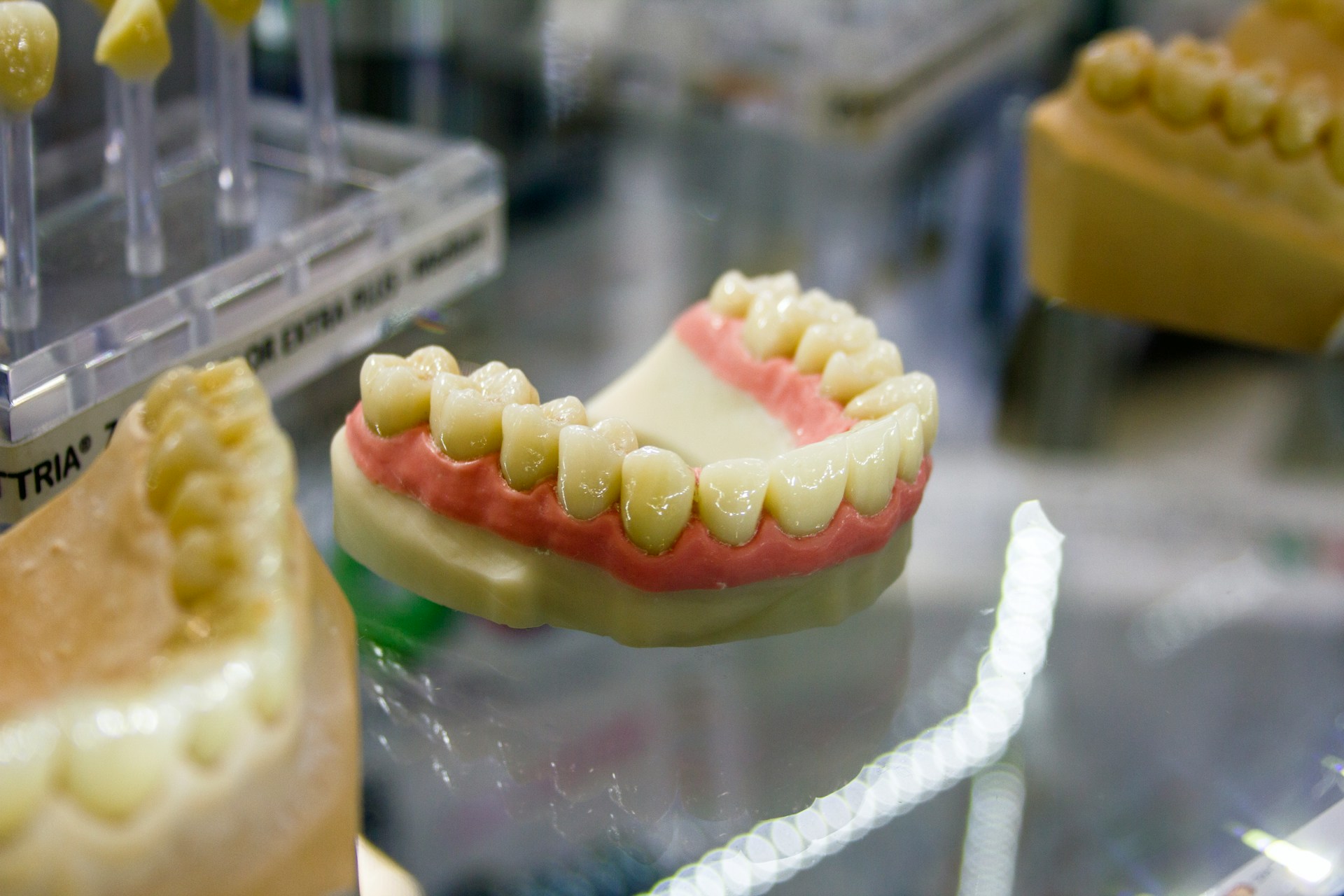Navigating the realm of cosmetic treatments can indeed feel overwhelming, particularly when deciding between Botox vs fillers in the UK. While both options offer the promise of rejuvenation and a more youthful appearance, they each serve distinct purposes and possess unique characteristics.
This article delves into the differences in composition, target areas, and results associated with Botox and fillers, as well as their respective benefits and risks. It aims to help you determine which treatment aligns best with your age, skin type, and budget, give the power toing you to make an informed decision on your beauty journey.
Additionally, the article provides tips for finding a qualified practitioner to ensure that you achieve safe and effective results. Read on to explore the best options for enhancing your natural beauty.
What Are The Differences Between Botox vs Fillers?

When enhancing facial aesthetics, it’s important to understand the differences between Botox and fillers for anyone considering non-surgical treatments.
Botox is a neuromodulator that primarily addresses fine lines and wrinkles by temporarily paralyzing the underlying muscles. On the other hand, dermal fillers, including options like lip fillers and cheek fillers, are designed to restore facial volume and smooth out deeper lines using substances such as hyaluronic acid.
Each treatment has its own cosmetic goals and provides unique results, so choosing the right one really depends on individual preferences and desired outcomes.
1. Composition
The composition of Botox and fillers differs significantly, which underscores their distinct functionalities within aesthetic procedures. Botox is derived from the botulinum toxin, functioning as a neuromodulator that temporarily inhibits muscle contractions. In contrast, fillers typically contain hyaluronic acid, a substance naturally found in the body that provides volume and hydration to the skin.
Various types of fillers, such as Restylane and Juvederm, offer unique benefits tailored to specific needs.
- Restylane is well-regarded for its ability to stimulate collagen production, making it particularly effective for enhancing skin elasticity and creating a more youthful appearance.
- Conversely, Juvederm features a smooth consistency that allows for a natural look when filling deeper lines and enhancing facial contours.
Both options are generally recognised for their safety when administered by qualified professionals. By understanding the differences in these compositions, individuals can make informed decisions about anti-ageing treatments that not only enhance their appearance but also promote skin rejuvenation.
2. Target Areas
Botox and fillers serve distinct purposes in addressing various aesthetic concerns across the face. Botox is primarily used to reduce wrinkles in areas such as the forehead and around the eyes. In contrast, fillers are designed to enhance facial volume in regions like the cheeks, lips, and under-eye areas.
By targeting these specific areas, Botox effectively smooths crow’s feet and frown lines, resulting in a more youthful appearance. Meanwhile, dermal fillers restore plumpness, addressing the natural loss of volume that often accompanies ageing. Patients looking to improve issues like nasolabial folds or thin lips can benefit from fillers, which typically provide immediate results.
It is essential for individuals to be well-informed about these treatments and their unique purposes. Consulting with a qualified practitioner not only ensures safety but also aids in determining the most suitable options for achieving the desired aesthetic outcome.
Personalised treatment approaches can significantly enhance overall satisfaction with the results.
3. Results
The results of Botox and fillers can vary significantly in terms of both appearance and duration. Botox is generally known for providing smoother skin and reducing wrinkles, with results lasting approximately three to six months.
In contrast, fillers offer immediate volume and contouring effects, which can last anywhere from six months to a year or longer, depending on the specific type used.
The difference in longevity between these two treatments can significantly impact a patient’s decision, especially when considering how often they want to undergo treatment and how much maintenance they are willing to commit to. Botox typically requires more frequent sessions to sustain its smoothing effects, while fillers may need less regular attention, making them an attractive option for individuals seeking minimal downtime.
When comparing costs, the price of Botox in the UK and fillers can vary significantly, influenced by factors such as geographical location, the provider’s level of expertise, and the specific areas being treated.
Additionally, patient feedback underscores the relevance of recovery time, with many individuals reporting that fillers often allow for an easier recovery process compared to Botox, which may involve some bruising or swelling following the treatment.
What Are The Benefits Of Botox and Fillers?

Botox and fillers provide a range of benefits that contribute to their popularity among individuals seeking non-surgical treatments to enhance their appearance.
Botox is particularly well-known for its effectiveness in reducing wrinkles and preventing the formation of fine lines. On the other hand, fillers are excellent at restoring lost facial volume, contouring features, and achieving a youthful appearance without the need for invasive procedures.
As a result, both options are highly sought after for their anti-ageing solutions.
1. Botox Benefits
The advantages of Botox primarily centre on its capacity to effectively reduce wrinkles and enhance facial symmetry without the need for invasive surgery. As a non-invasive treatment, Botox offers a quick application process with minimal downtime, making it a convenient choice for those seeking immediate results.
Plus its cosmetic benefits, many patients report experiencing a significant psychological uplift following the treatment. This boost in confidence can often be linked to societal beauty standards, which place considerable pressure on individuals to maintain a youthful appearance.
The safety profile of Botox adds to its attractiveness; numerous studies support its efficacy as a well-tolerated procedure for most individuals. The treatment’s popularity continues to rise, with many people choosing Botox as a dependable method to achieve a refreshed look. This trend highlights the treatment’s substantial impact on both aesthetics and self-esteem.
2. Fillers Benefits
Fillers provide numerous benefits that significantly enhance facial aesthetics by restoring lost volume and improving contours. They are particularly effective in areas such as the lips, cheeks, and under-eye regions, offering immediate results that can boost patient satisfaction and confidence.
The versatility of fillers goes beyond simply smoothing wrinkles; they can also sculpt jawlines and enhance the nose, making them suitable for a variety of aesthetic goals.
Different product variations, including options based on hyaluronic acid and collagen, cater to specific treatment plans and individual needs. This level of customisation ensures that each patient can achieve a look that not only meets their expectations but also complements their natural features.
Consequently, fillers can create beautifully harmonious enhancements, allowing individuals to embrace their unique beauty with renewed self-assurance.
What Are The Risks Of Botox and Fillers?

Although Botox and fillers are generally considered safe non-surgical treatments, it is important for patients to be aware of the potential risks and side effects before deciding to proceed.
Common risks associated with Botox may include temporary swelling and bruising at the injection site. On the other hand, fillers can lead to allergic reactions or lumps if they are not administered properly.
It is essential to have a thorough understanding of these factors to make an informed decision.
1. Botox Risks
The risks associated with Botox treatments are generally low, but they can include side effects such as headaches, drooping eyelids, and, in some cases, allergic reactions. This highlights the importance of choosing a qualified practitioner to ensure the effectiveness of the treatment while maintaining patient safety.
Plus these common side effects, more serious complications may arise, such as muscle weakness or vision problems. This further emphasises the need for a thorough consultation prior to any procedure.
It is crucial to understand contraindications, including certain neuromuscular disorders or pregnancy, to avoid adverse reactions. A skilled practitioner will not only assess suitability but will also provide comprehensive pre-treatment guidance, ensuring that individuals are fully informed about the risks involved and what to expect during recovery.
Making an informed choice fosters a safe treatment environment and significantly enhances the likelihood of a successful recovery and overall satisfaction with the results.
2. Fillers Risks
Fillers can carry certain risks, including possible side effects such as swelling, bruising, and allergic reactions. This underscores the importance of careful consideration and thorough patient education prior to treatment. Having fillers administered in a clinical setting by a skilled practitioner can significantly reduce these risks.
Patients should also remain aware that long-term effects associated with filler treatments, such as nodules or changes in skin texture, might not become apparent until some time after the procedure.
Post-treatment care is essential for minimising complications. Patients are typically advised to refrain from strenuous exercise, excessive sun exposure, and certain medications to facilitate healing.
As trends within the cosmetic industry continue to evolve, prioritising patient education is crucial. This give the power tos individuals to make informed decisions about the longevity and safety of their filler treatments.
Understanding the nuances of recovery and the potential secondary effects can enable patients to achieve their desired results while maintaining their overall skin health.
Which Treatment Is Right For You?

Choosing between Botox and fillers can indeed feel overwhelming, as each treatment presents distinct advantages tailored to individual preferences.
Important factors to consider include age, skin type, and personal cosmetic goals, all of which significantly influence the most appropriate treatment choice.
It is vital to evaluate these elements thoroughly and consult with a qualified practitioner to ensure the most favourable aesthetic results.
1. Age
Age considerations play a critical role in the decision-making process when choosing between Botox and fillers, as different age groups often have distinct aesthetic needs and goals.
For younger individuals, preventive Botox treatments may be a priority to help prevent the formation of fine lines. In contrast, older patients might seek fillers primarily for volume restoration and wrinkle correction.
As individuals advance through their 30s and 40s, common aesthetic concerns tend to evolve. Many start to notice deeper folds, sagging skin, and a decline in youthful contour. At this point, it becomes essential to understand a patient’s history, as any previous treatments or existing skin conditions can significantly influence the effectiveness of the chosen interventions.
Those in their 50s and beyond often aim for more noticeable rejuvenation, frequently opting for a combination of both Botox and fillers to achieve a balanced, harmonious appearance that addresses multiple signs of ageing.
By customising treatment plans based on age and specific concerns, practitioners can significantly enhance both outcomes and patient satisfaction.
2. Skin Type
Understanding one’s skin type is essential in determining whether Botox or fillers are the appropriate choice, as different treatments can yield varying results based on individual skin characteristics. For instance, individuals with oily skin may find Botox beneficial for wrinkle reduction, while those with dry skin might prefer fillers for enhanced hydration and volume.
Tailoring treatment plans to accommodate these unique skin conditions can significantly improve the overall patient experience, leading to greater satisfaction and enhanced effectiveness. Patients with sensitive skin may require gentler formulations or additional pre-treatment measures to minimise the risk of adverse reactions.
Those with combination skin might discover that a dual approach—utilising both Botox and fillers—addresses multiple concerns, resulting in a more balanced and rejuvenated appearance. By acknowledging and adapting to these differences, practitioners can provide personalised care, allowing patients to achieve optimal results that align with their individual desires and skin needs.
3. Desired Results
Determining your desired outcomes is crucial in choosing between Botox and fillers, as each treatment addresses distinct aesthetic goals. If your objective is to smooth out dynamic wrinkles, Botox may be the more appropriate choice. On the other hand, if you seek to achieve fuller lips or enhanced cheekbones, fillers are likely to be the better option for those particular cosmetic desires.
Understanding these fundamental effects can greatly influence treatment decisions for individuals seeking enhancement. For example, a patient who aimed for a natural, refreshed appearance after a demanding work schedule discovered that combining both treatments produced the best results, highlighting the importance of personalised treatment plans.
The quality of formulations and the expertise of practitioners are vital in this process. Skilled professionals ensure that procedures are tailored to each individual’s unique aesthetic aspirations.
Real-life testimonials further illustrate how a carefully crafted plan can not only enhance appearance but also boost confidence. Many individuals share their transformative experiences, inspiring others to explore their own options.
4. Budget
Budget considerations play a crucial role when choosing between Botox and fillers, as costs can vary significantly based on the type of treatment, the expertise of the practitioner, and the geographical location.
Typically, the price range for Botox sessions can be quite variable, whereas fillers may have different pricing depending on the specific product variations used and the treatment areas involved.
When evaluating the total costs over time, patients should also take into account the longevity of each treatment. Botox generally requires maintenance every three to four months, while dermal fillers can last anywhere from six months to two years. This difference can significantly influence overall financial commitments.
Accessibility to these treatments is another important factor; not all clinics provide the same level of expertise or pricing, which can impact patient satisfaction.
Thus, it is essential to understand both the initial investment and the long-term financial implications in order to make an informed decision that aligns with individual budget constraints and expectations.
How To Choose A Qualified Practitioner?

Choosing a qualified practitioner for Botox or filler treatments is crucial for ensuring both safety and the desired outcomes. This process begins with conducting thorough research and reading reviews from previous patients.
It is important to assess the practitioner’s experience, certifications, and the overall environment of the clinic before making a decision. Taking these steps can greatly enhance the likelihood of a positive experience and satisfactory results.
1. Research And Read Reviews
Conducting thorough research and reading reviews are essential steps in selecting a practitioner for Botox or fillers, as these insights can greatly influence your decision. Online platforms and social media offer valuable information regarding practitioners’ expertise, patient satisfaction, and overall treatment experiences.
Plus personal accounts shared by former clients, it is important to consider the qualifications of the practitioners themselves. Verifying their certifications, training, and professional affiliations can provide reassurance about their ability to perform aesthetic procedures safely and effectively.
Patient testimonials serve as a testament to a practitioner’s skills and can assist potential clients in evaluating their options. Understanding informed consent and knowing what to expect during treatments is crucial for ensuring a positive experience.
This combination of resources give the power tos individuals to make well-informed decisions, ultimately leading to successful outcomes in aesthetic enhancements.
2. Ask For Certifications And Training
When selecting a practitioner for Botox or fillers, it is important to inquire about their certifications and training to ensure they have the necessary skills and knowledge to perform these aesthetic treatments safely. A qualified practitioner should be able to provide proof of relevant training and compliance with healthcare regulations.
Plus verifying credentials, understanding their commitment to ongoing education is crucial, as the field of aesthetics is continually evolving. Regularly updated training not only enhances a practitioner’s skill set but also ensures they are equipped with the latest techniques and safety protocols to minimise potential side effects.
Patients should prioritise selecting professionals who actively engage in workshops and conferences. This commitment reflects a dedication to providing the highest standard of care.
Carefully choosing a practitioner can significantly impact overall satisfaction, as experienced professionals are more likely to recognise and address any complications that may arise during treatment.
3. In-Person Consultation
An in-person consultation is a crucial step in selecting a qualified practitioner while exploring the best Botox deals in your area in the UK. It provides an opportunity to discuss your cosmetic goals, ask questions, and evaluate the practitioner’s approach to patient education, ensuring that your treatment plan aligns with your individual needs and expectations.
During this consultation, it is important to assess the practitioner’s communication style. A clear and approachable demeanor can enhance the overall patient experience. Their willingness to address concerns and provide detailed answers instills confidence in their expertise, which is particularly important when considering the best Botox deals in your area in the UK.
A practitioner who actively listens and prioritizes patient education creates a collaborative environment. This fosters open dialogue about realistic outcomes and potential side effects, ensuring a trusting relationship and a successful aesthetic journey.
Frequently Asked Questions
What is the difference between Botox vs fillers in the UK?
Botox is a neurotoxin that temporarily relaxes muscles and reduces the appearance of wrinkles, while fillers are injectable substances that add volume and fill in wrinkles or folds.
Which treatment is more effective for wrinkles?
Both Botox and fillers can effectively reduce the appearance of wrinkles, but they work in different ways. Botox is best for dynamic wrinkles caused by muscle movement, while fillers are better for static wrinkles caused by loss of volume.
Are Botox and fillers safe to use in the UK?
Yes, Botox and fillers are both approved by the Medicines and Healthcare products Regulatory Agency (MHRA) in the UK and have been deemed safe for use when administered by a qualified professional.
How long do results from Botox and fillers last?
The results of Botox typically last 3-4 months, while fillers can last anywhere from 6 months to 2 years depending on the type used. Individual results may vary.
Which treatment is more suitable for me?
The best treatment option for you will depend on your specific concerns and desired results. It is recommended to consult with a qualified practitioner who can assess your individual needs and make a personalised treatment plan.
Are there any side effects associated with Botox and fillers?
As with any medical procedure, there is a potential for side effects with Botox and fillers. These may include bruising, redness, swelling, and temporary muscle weakness. However, these are usually mild and short-lived.


